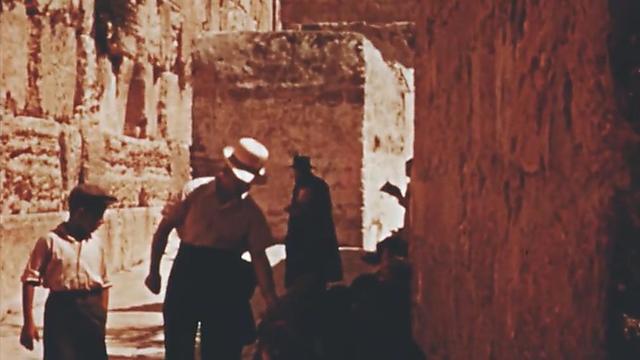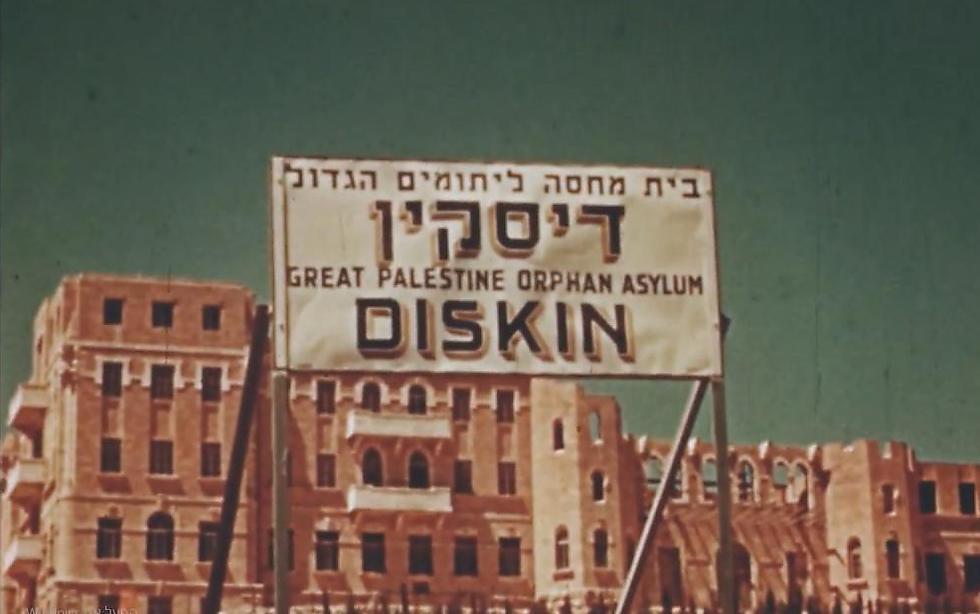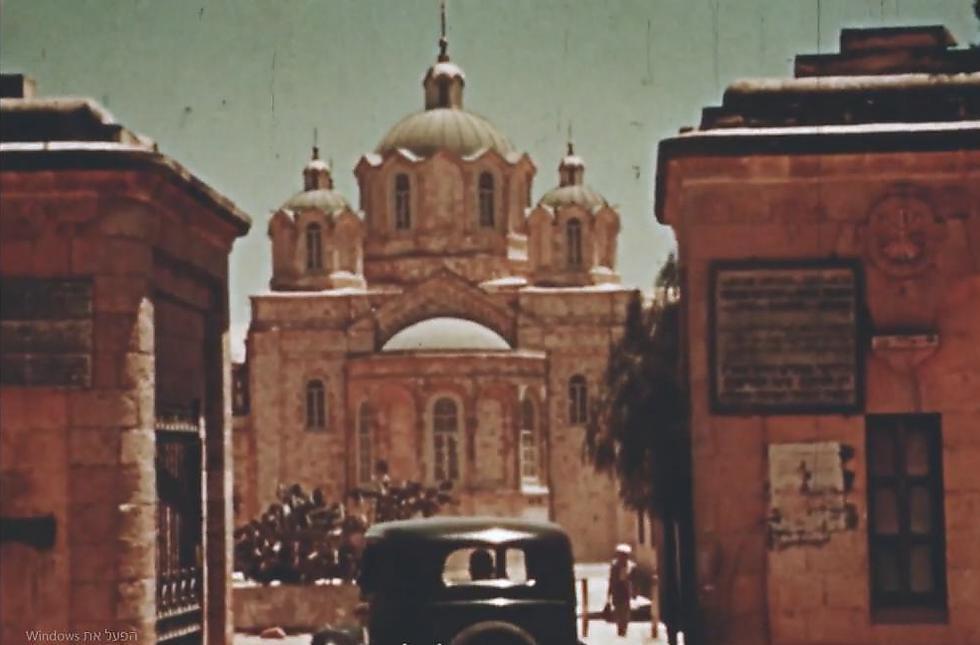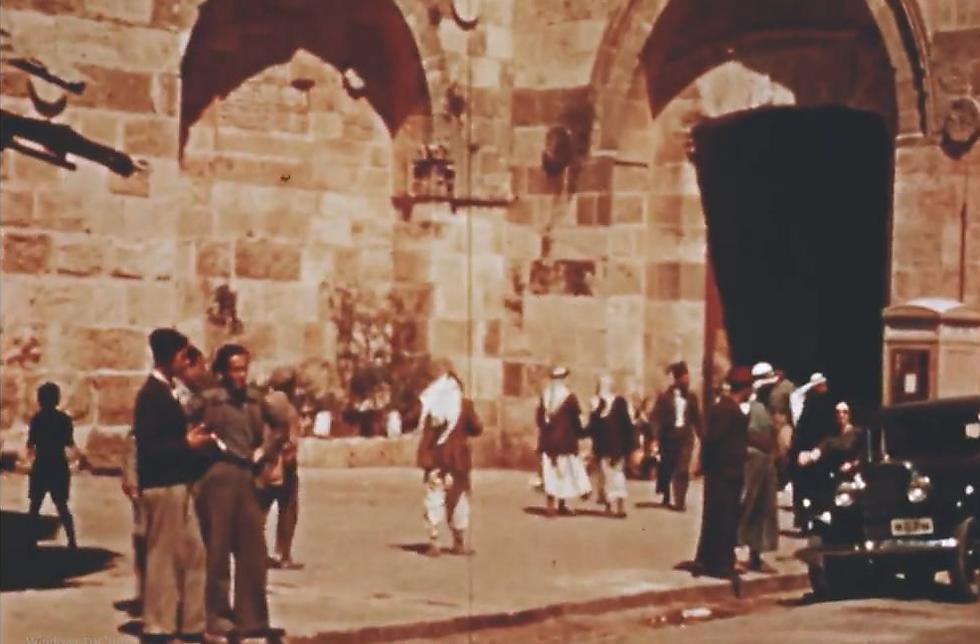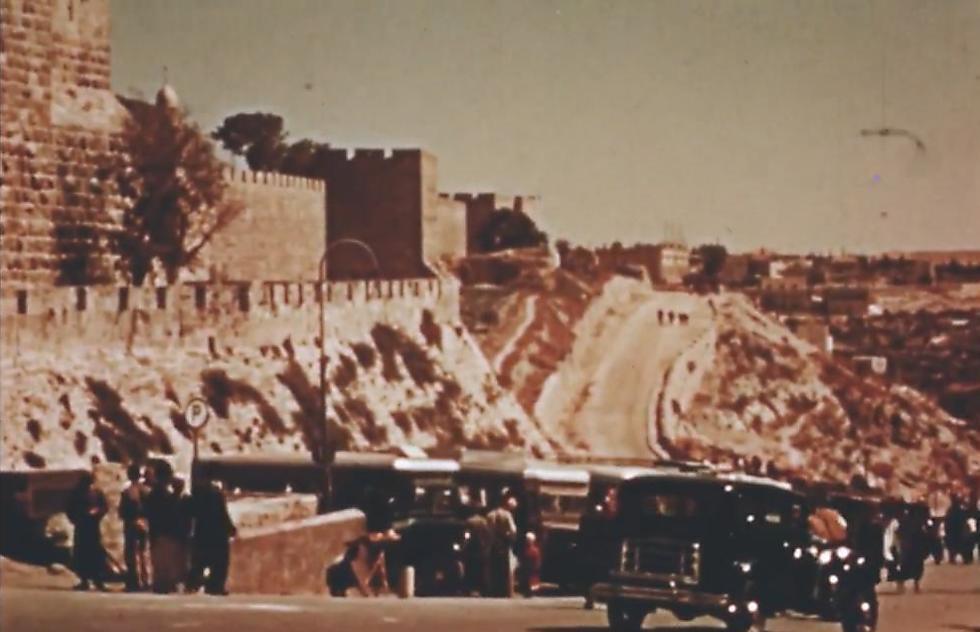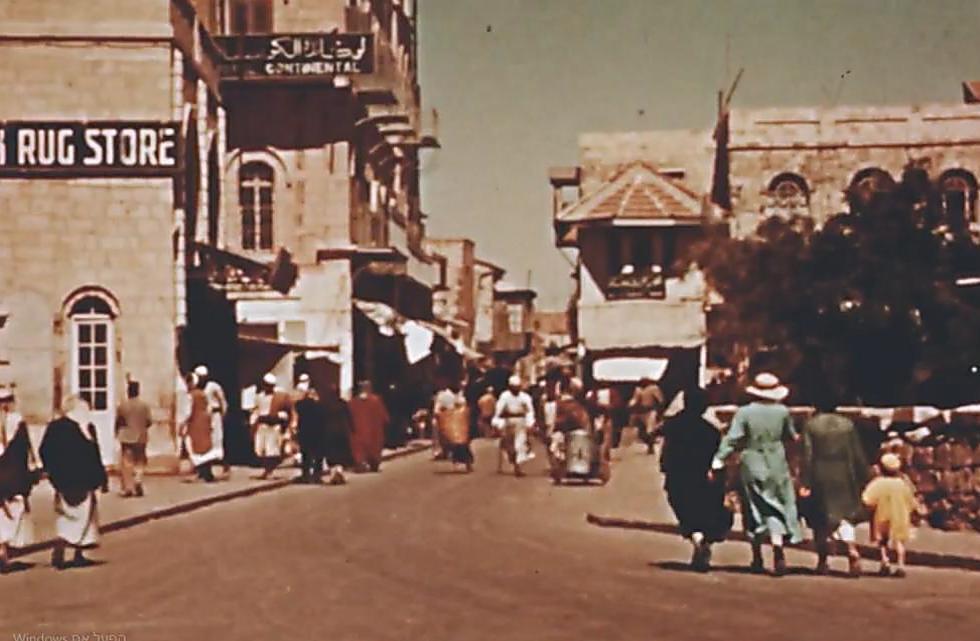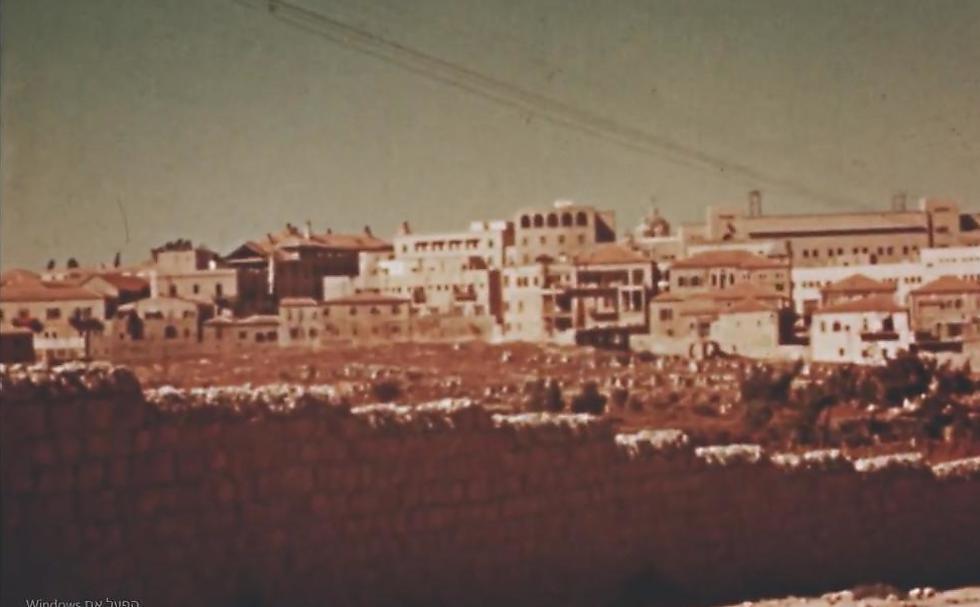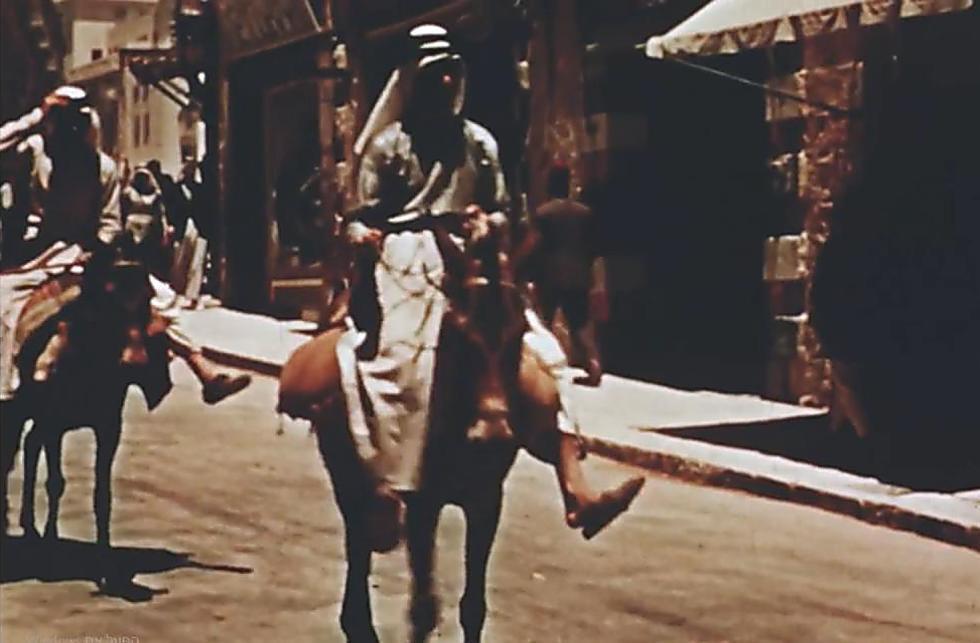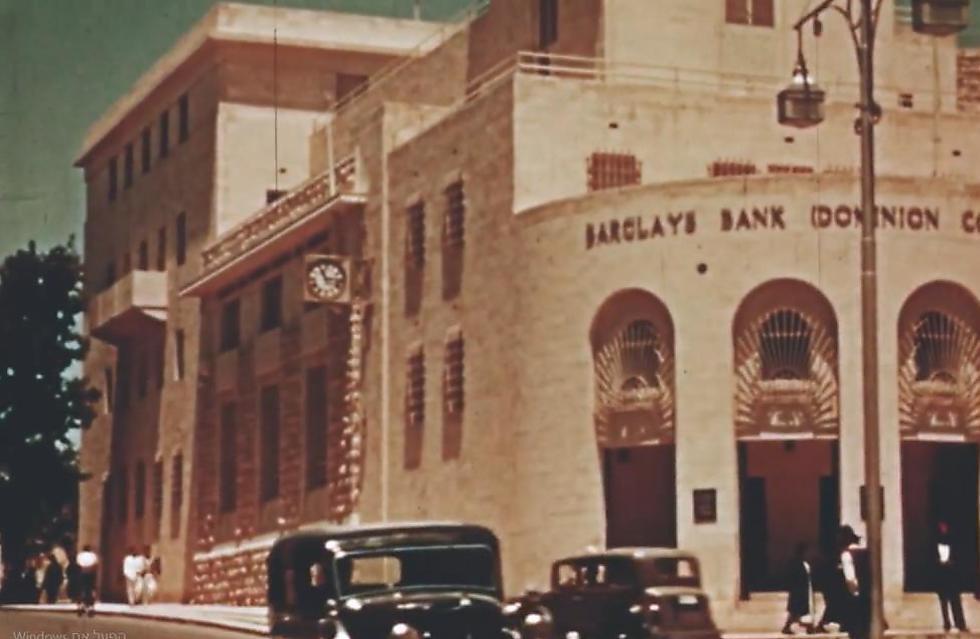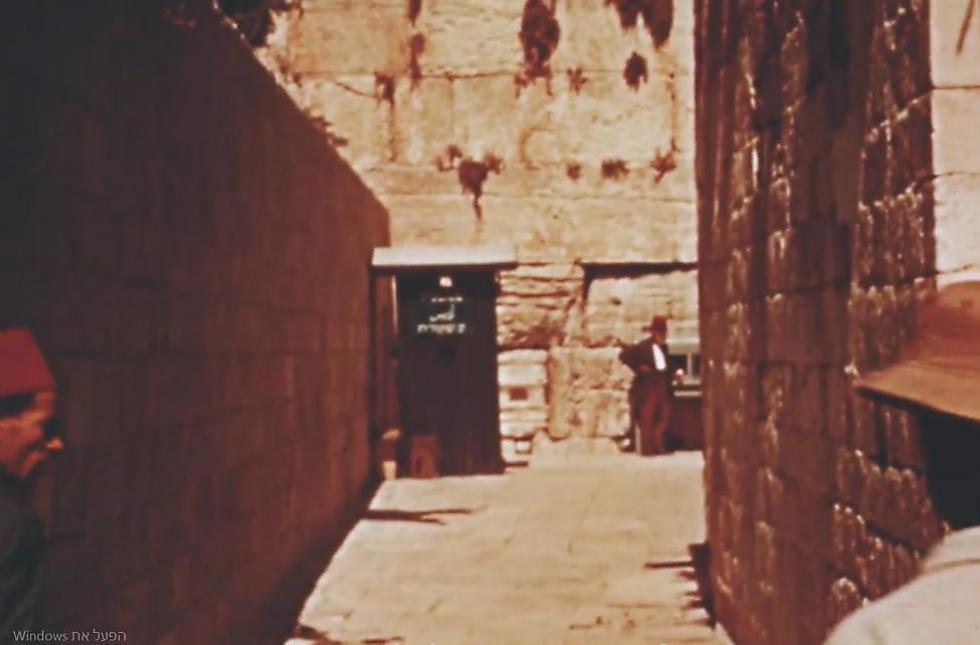Getting your Trinity Audio player ready...
Rare footage from the 1930s shows Jerusalem as never seen before, from the lens of the Margulis family, who vacationed in the city and took with it a 16 mm camera and a newly acquired color film.
and Twitter
The rare documentation includes footage of Old City alleyways, the Hebrew University at Mount Scopus, and above all — the Western Wall, long before the modern-day plaza existed, when only a narrow path separated it from the Moroccan Quarter, which was destroyed after the capture of East Jerusalem in the 1967 Six-Day War.
The rare documentation includes footage of Old City alleys, the Mount Scopus Hebrew University and above all — the Western Wall, long before the modern-day plaza existed, when only a narrow path separated it from the Moroccan Quarter, which was destroyed after the 1967 seizing of East Jerusalem.
(קרדיט: אוסף משפחתי אלכסנדר מרגוליס וסינמטק ירושלים – ארכיון ישראלי לסרטים )
The highlyprized material was transferred to the Jerusalem Cinematheque archive, which digitized it and made it accessible to the public.
Photos show Haredi Jews from the Old Yishuv, Muslims wearing traditional garbs, women in elaborate hats, camels, donkeys and beggars on street corners.
The few cars in the streets belong to people who served in administrative positions.
"The Western Wall always had beggars," says Rabbi Israel Gelis, a 10th generation Jerusalemite and a well-known story teller.
"In the Book of Proverbs, it says that 'righteousness delivers from death,' and indeed charity was a major part of prayer. People used to pray for Jews who lived in the diaspora and were sick or poor, they would receive letters and instantly go and pray. When they were done praying, they gave beggars by the Western Wall charity," says Gelis.
According to Geilis, Jews were the majority of residents in the capital as of the beginning of the 20th Century.
"In the 1922 British census, there were 31,100 Jews, 14,700 Christians and only 13,400 Muslims in Jerusalem. In 1931 there were 53,800 Jews, 19,300 Christians and 19,900 Muslims, and it didn't even include the new Jewish neighborhoods outside the Old City walls," he says.
"In the footage, you can see Ashkenazi Jews wearing a Jerusalem-style hat with round rims, and a kaftan," Gelis says.
"In order to understand why Ashkenazi Jews wore Sephardic garb, we have to go back to the year 1700, the year when Rabbi Judah ben Samuel of Regensburg arrived in the city. He passed away soon after, at 41, but still managed to buy land in the Old City to build an Ashkenazi synagogue on," Geilis says.
"When he died, he left behind a huge debt to the Arab builders, and after that, Ashkenazi Jews weren’t allowed to live in Jerusalem for over 100 years.
"In the early 19 Century, several Ashkenazi students of the Vilna Gaon came to live in Jerusalem, and in order not to be recognized, they wore a garb, like the Sephardi Jews.
"It wasn't until 1836 that Rabbi Avraham Shlomo Zalman Zoref was able to settle the debt, and then Ashkenazi Jews were again allowed to live in Jerusalem," says Geilis.
The digitization of archival footages in the Jerusalem Cinematheque started three years ago, and is set to end in another year, finally allowing the public to delve into thousands of forgotten footage pieces from the city's history.
Tamar Hayardeni assisted in preparing this article


